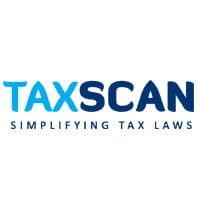AO cannot change Valuation Method Opted by Taxpayer: Delhi HC directs AO to determine FMV of Shares Bearing DCF method in Mind [Read Order]
The Assessing Officer cannot change the method of valuation which has been opted by the assessee

AO cannot – Valuation Method Opted by Taxpayer – Delhi HC directs AO – FMV of Shares Bearing DCF method in Mind – taxscan
AO cannot – Valuation Method Opted by Taxpayer – Delhi HC directs AO – FMV of Shares Bearing DCF method in Mind – taxscan
The Delhi High Court Directed the Assessing Officer ( AO ) to determine fair market value ( FMV ) of shares bearing in mind the discounted cash Flow ( DCF ) method, prohibiting AO from Altering Valuation Method Chosen by Taxpayer."
In the case concerning Assessment Year 2014-15, the Income Tax Appellate Tribunal (ITAT) upheld the additions made by the Assessing Officer following the rejection of the Fair Market Value evaluation submitted by the appellant. This rejection was made under Section 56(2)(viib) of the Income Tax Act, 1961, in conjunction with Rule 11UA of the Income Tax Rules, 1962. The valuation issue arose from the appellant's allotment of 3,15,000 equity shares with a face value of INR 10/- each at a premium of INR 40/- per share, totaling INR 1,26,00,000/-.
The appellant's primary contention is that even if the AO deemed it appropriate to reject the valuation report based on the Discounted Cash Flow Method, the AO could not have unilaterally substituted the means and method of valuation. This argument was presented by Mr. Lalchandani, learned counsel representing the appellant.
Instead of adhering to the DCF Method chosen by the assessee, the AO opted for the Net Asset Value Method independently.
However, Mr. Kumar, representing the respondent, argued that Section 56(2)(viib) necessitates the submission of a report depicting the FMV of shares by the assessee, substantiated to the satisfaction of the AO. Since the appellant failed to establish the correctness of the valuation despite ample opportunities, according to counsel, the AO was entitled to undertake an independent valuation exercise.
The court's interpretation of Rule 11UA(2) of Income Tax Rules emphasized that the choice of valuation method lies solely with the assessee, as clarified by Section 56(2)(viib) and Rule 11UA(2).
The bench comprising Justice Yashwanth Varma and Justice Purushaindra Kumar Kaurav, the court allowed the appeal and overturned the ITAT's order dated 16 May 2018. Consequently, the matter was remitted to the AO for a fresh valuation exercise in accordance with the DCF method.
The court further grants the AO liberty to scrutinize the valuation report and determine a fresh valuation, either independently or by appointing an independent valuer. However, the basis for valuation must adhere to the DCF method, and the AO is prohibited from changing the chosen valuation method of the assessee. Moreover, the AO is authorized to determine the FMV of shares considering the DCF Method, with the valuation independently determined by a valuer appointed for this purpose.
To Read the full text of the Order CLICK HERE
Support our journalism by subscribing to Taxscan premium. Follow us on Telegram for quick updates


